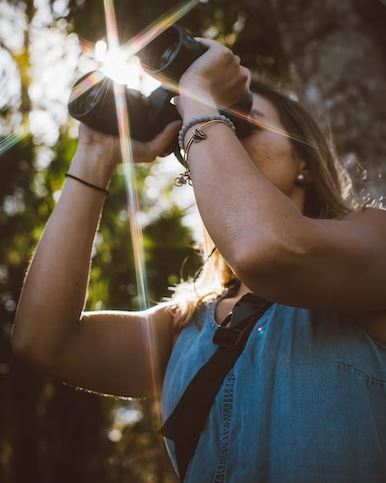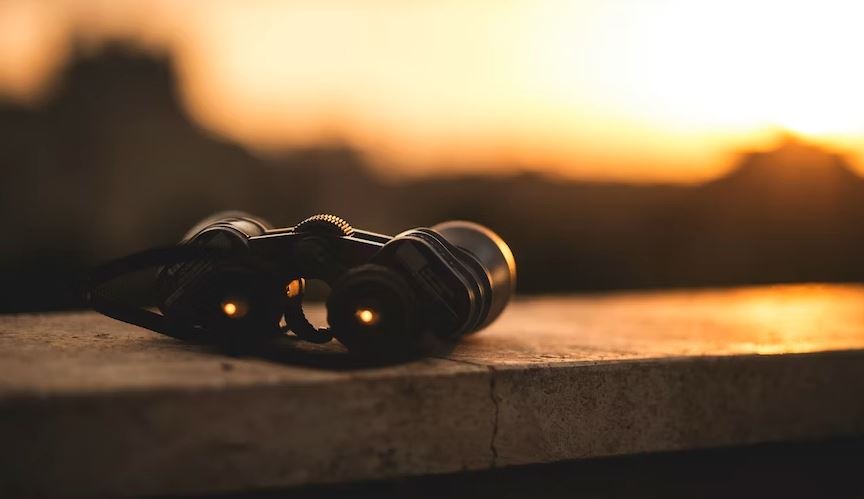Birdwatching, stargazing, sports events, or simply enjoying nature are limitless adventures any outdoor enthusiast can enjoy using binoculars. While some may opt to purchase a telescope, binoculars are simple – maintenance-free, available for immediate use, and very versatile, as they can be used both during the day or night, which is difficult to achieve from most telescopes.
These compact optical devices allow us to bring distant objects closer and enhance our overall viewing experience. However, for beginners, the vast array of options and technical jargon can be overwhelming. In addition, binoculars are quite expensive, a long-term investment requiring meticulous decision-making. This article will provide novice users with a comprehensive understanding of choosing the appropriate binoculars for different activities.
Guide to Choosing Binoculars
1. Understand the Specifications
Binoculars are usually labeled with numbers, such as 8×42 or 10×50. The first number (e.g., 8x) represents the magnification, indicating how many times closer the subject will appear to the naked eye. The second number (for example, 42 or 50) shows the diameter of the lens in millimeters, which affects the amount of light the binoculars can capture. The balance between magnification and objective size is essential for a clear image.
Although binoculars with a small magnification factor produce less enhanced images, those images will be sharper, and your field of view (the distance you can see) will be more comprehensive.
General Tip:
Choose binoculars with 7x to 10x magnification for general use. Before buying a pair of binoculars, look at the number before the “x” in their description. This is the magnification factor, which indicates how much closer objects will appear. A 7x to 10x magnification is your best value for regular binoculars. If you need a wide field of view, such as watching a football game from a high chair, choose binoculars with lower magnification (7-8x).
2. Know the Different Sizes

For better understanding, binoculars are divided into compact, medium, and full-size categories based on lens size (the second number in the model name). Note, however, that differences in optics, design, and construction may still mean that samples with the same sized objective will differ in size and weight.
Compact has an objective lens size of less than 30mm (8×25, 10×28, etc.), suitable for stargazing and bird watching. Midsize has objective lens sizes from 30mm to 40mm (10×30, 8×32, etc.), ideal for hunting or wildlife viewing. Lastly, full-size comes with an objective lens size greater than 40mm (8×42, 10×50, etc.), most suitable for hunting, bird watching, nature observation, and general use. Such binoculars are not bulky and not too light. They are the most common optical instruments and the most comfortable to use.
General Tip:
If binoculars fit in your pocket, compact and lightweight models make sense. Mid-sized models can give you a brighter image and are more comfortable to hold for long periods. This can change with larger binoculars, which some people find too heavy to hold for long periods.
3. Learn the Magnification and Field of View
Most of the time, you will choose between 8 or 10 magnification, although you can also find models with lower or higher magnification. Higher magnification is only sometimes better. This can lead to a narrower field of view and more shaky images. For general use, 7x to 10x magnification is recommended. The broader field of view is beneficial for tracking fast-moving subjects.
Meanwhile, magnification power directly affects your field of view (lower magnification magnifies it; higher magnification narrows it). A narrower field of view makes it more difficult to locate small and moving objects (such as birds) when scanning at a distance. This smaller field of view also lets in less light, making the image darker.
General Tip:
Try as many binocular models as you can before you buy. Note that binoculars of identical specifications can have significantly different fields of view (up to 90 feet wide at 1,000 yards). So always check this spec whenever you make final comparisons and purchases.
4. Research on Lens Coatings and Prisms
The objective lens diameter aims to determine how much light your binoculars can capture. For two pairs of binoculars with the same specs, the pair with the larger lens will catch more light, resulting in a brighter image.
For lens and material coatings, the composition of the glass and lens coatings that reduce reflections add up to determine the lucidness and brightness of your images. This is when test visualization is essential. This will tell you how much your eyes can detect, so you should consider how much you pay for your desired image quality.
Additionally, prisms are optical components that direct light from the image through the binoculars to your eyes. Older prism binoculars had a sizeable front barrel that was not aligned with the eyepiece, while newer prism designs have the eyepiece and objective aligned. The difference in appearance will not tell you anything about the optical quality, but roof prisms make the binoculars smaller and lighter.
General Tip:
Look for binoculars with multi-coated or multi-coated lenses. These coatings improve light transmission, brightness, and image clarity.
Choose glass lenses over plastic for better-quality images. The prism, usually a porro or roof prism, affects the design and performance of the binoculars. Roof prisms are more compact and align objectives and eyepieces in a straight line, while porro prisms are bulkier but can provide better depth perception. Remember, binoculars with higher optical quality will also have a more colorful image.
5. Consider Eye Relief and Compatibility
Eye relief refers to the allocated distance between the eyepiece and your eye while seeing the entire field. This is an essential feature if you wear glasses. Most binoculars have an adjustable eyepiece that allows you to set them to their maximum eye drop value (specs stated). This is usually done by rolling the rubber eye pad or twisting the washer to shorten the eyepiece.
You will also encounter the exit pupil while scanning your binoculars. The exit pupil size can be measured by dividing the objective lens diameter by the number of magnifications while 8×42 binoculars, 42 divided by 8 equals the exit pupil diameter of 5.25mm. It indicates the size of the light beam reaching your eyes, whose pupils vary from about 2mm in bright light to 7mm in complete darkness.
General Tip:
Ensure the eyepieces are comfortable to look through. Eye relief is vital for comfort, especially if you wear glasses. Look for binoculars with sufficient eye relief if you’re a glasses wearer. Also, if you wear glasses, look for an eye relief of 11mm or more. Low-light situations need an exit pupil of 5mm or more is suitable for exit pupil choices. High exit pupil specification can make viewing easier at dawn, dusk, or with dense tree cover. For daylight viewing, exit pupil size is less critical because almost all binoculars offer exit pupils that exceed 2mm.
6. Remember your Binocular’s Purpose
Different activities require different binocular specifications. A lower magnification (e.g., 8x) is suitable for birdwatching or sporting events, providing a broader field of view and less handshake. Higher magnifications (e.g., 10x or more) may be preferred for stargazing or long-range observations.
General Tip:
- Backpacking and Hiking: Since size and weight in the bag are primary concerns, you’ll want compact binoculars with 8 or 10 magnification and a smaller objective diameter of about 28 (8×25, 10×25, 8×28, and 10×28 are all options. good choice). A pair with a rubber coating lasts longer, and water-resistant or water-resistant models will help with exposure to the elements.
- Bird Watching: Consider medium and large-sized models (8×32 and 8×42 binoculars are popular with bird watchers if size and weight are not much of a concern. While 10x magnification may seem practical when observing small animals, an identical pair of binoculars with 8x magnification will have a wider field of view, which is essential for locating birds. Water resistance is also a nice feature, as are models that don’t fog up when going from a hot car to cooler temperatures outside.
- Whale Watching, Wildlife Viewing, and Safaris: Popular binoculars include 8×32, 8×42, 10×32, and 10×42. Choose a higher magnification (10 instead of 8) when you will likely be further away from the animal. Choose medium size (32mm lens) instead of full size (42mm lens) if you want something more compact. Water resistance is also good – however, opt for fully waterproof models to watch whales from the boat instead of from the shore.
- Paddling: If you are going out for some water adventure, use a lower magnification, such as eight or more down, because the higher magnification (10 power) can help stabilize viewing difficulty. For obvious reasons, choosing a waterproof model is also a good idea. 8×32 is a standard size.
- Stargazing: This is where you want to maximize a full-size binocular’s magnification and light-gathering capabilities. 10×42 or 10×50 are options; If you wish for higher magnification, you will need a tripod to keep the binoculars in place.
Additional Tips for Better Binocular Understanding
1. Testing and Proper Adjustment
To know how easy they are to focus, how comfortable the binoculars are in your hand, and how clear and bright they are optical, you need to go to a store where you can try on many of the models you are considering. Before you buy, calibrate a pair of binoculars inside the store to see how well you can focus them on a nearby object. Measure the distance between the subject and the binoculars to assess the image quality for that particular length.
2. Check the manufacturer’s reputation and warranty.
Many high-end binoculars come with extended or lifetime warranties. Depending on how you plan to use your binoculars or how long you want to own them, it may be worth ensuring your glasses come with a long-term warranty.
3. Use the magnifying table.
Magnification charts compare and contrast different sizes of binoculars and their lenses to determine which pair is most useful for which preference. For example, binoculars with larger lenses often have excellent image detail, making them ideal for observing birds and whales.
4. Choose the most suitable accessories that are budget-friendly.
Some cheaper binoculars succeed by opting for low-end accessories like unpadded nylon straps and flimsy or unattached lens caps. Usually, this is just a minor consideration; it can mean you quickly stop using or lose the lens cap; or change to a better strap, jeopardizing your savings to some extent. Many affordable options offer good quality and performance for beginners.
5. Practice more and be patient.
Using binoculars takes practice. Start with stationary subjects before moving on to tracking moving subjects. Learn how to focus quickly and smoothly to capture fleeting moments. Then, choose a distant subject if you are interested in detecting small details at a distance.
Conclusion
Choosing the appropriate pair of binoculars can be daunting for a beginner. It is crucial to consider the type of binoculars, finding the right balance between magnification, price range, lens quality, and portability based on your specific needs. You can find a pair of binoculars that suit your needs and budget by researching and comparing different options. Remember, binoculars are an investment. With proper care and technique, binoculars can be a fantastic tool for exploring the world around you, so choose wisely and enjoy the world with enhanced vision and visibility.



